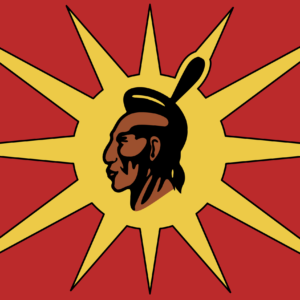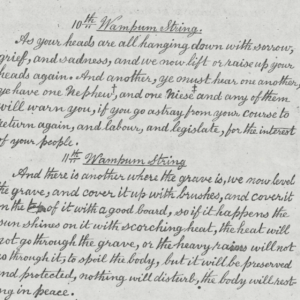
As if there aren’t enough things to worry about as a native person — we now have to worry about people race-shifting.
This is pretty cut and dry; the rise of the so-called “Eastern Metis” in the eastern provinces (Ontario, Québec, New Brunswick, and Nova Scotia) and in New England (Vermont, New Hampshire, Maine) are a part of what is now being dubbed race-shifting.
The actual Métis are a western-based Indigenous people whose culture grew out of kinship relations with the Plains Cree, Saulteaux, Assiniboine, and Dene. The so-called “Eastern Metis” are instead an example of what is referred to as race-shifting or self-indigenization, a process that involves white French-descendants inventing and claiming an “Indigenous” identity, often in opposition to actual Indigenous peoples.
Basically, race-shifting is a social repugnance that has taken off with otherwise white, French descendant settlers in Canada shifting into a self-defined “Indigenous” identity. These individuals who have not been dispossessed by colonial policies, or the multi-generational efforts to reconnect, are, put simply, French-descendant people discovering an Indigenous ancestor born 300 to 375 years ago through genealogy and using that ancestor as the sole basis for an eventual shift into an “Indigenous” identity today.
Since the early 2000s, there has been a meteoric rise in the number of people self-identifying as Métis in Eastern Canada.
New data shows the highest increases in self-reported “Métis” people between 2006 and 2016 were in Québec (149.2 per cent) and in Nova Scotia (124.3 per cent). In Canada during the same period, the increase was less than 60 per cent.
Rather than a spike in birth rates, almost all of the increase is due to to white Franco-Québécois and Acadian settlers “becoming” Indigenous. To go along with these numbers, nearly 30 “Métis” organizations were founded in both provinces during roughly the same period.
Newly established “Métis” communities, the Metis Nation is exempt of this, are stylizing themselves as the authentic inheritors of Indigenous nationhood, claiming that for many generations their ancestors were “hidden in plain sight.”
Bras d’Or Lake Métis Nation (BDLMN), based in Cape Breton members also connect their legitimacy as Canadians by highlighting their standing as “taxpayers” and placing themselves in opposition to the Indigenous Mi’kmaq thirteen member assembly of Nova Scotia, who are questioned, apparently because they don’t pay taxes.
If these people were native they would understand that the Mi’kmaq are sovereign.
Gloating in the limelight that so many native people have fought to be in, to be seen and heard after being invisible for decades, and acting as though being a part of that plight is simply repugnant when you’ve carried no weight and will not ever carry any weight. It screams entitlement. It echoes fraud.
There is no room for “if you can’t beat ‘em, join ‘em” when it comes to being native. Especially not when we have languages, practices, ceremonies, songs and teachings to revive.
With this comes an even more immediate problem on top of everything else — given that the Aboriginal Peoples Survey public policy instrument, if governments take race-shifting at face value, it could diminish the already inadequate public policy resources directed to Indigenous communities.
Let’s take a look at the most public way that this has happened.
Instagram posts surfaced last weekend showing a young white student celebrating her scholarship intended for Indigenous youth. The girl’s family says they have a legitimate claim to Indigenous ancestry based on genealogical records, but Indigenous leaders, myself, and you, should still be skeptical.
Ainsley Whynacht, 18, was announced as the winner of the 2019 Nova Scotia Government and General Employees Union (NSGEU) scholarship. The scholarship required applicants to submit an essay. NSGEU states in a Facebook post that Whynacht’s looked at “how the lack of access to public services has negatively affected the lives of Indigenous people.”
“So I applied for an aboriginal scholarship a few months ago and wrote some random essay on treatment of indigenous kids in school and? I actually got the scholarship? Good thing they don’t have to look at me and notice I’m the whitest person ever,” wrote Whynacht to her instagram.
She later posted again holding self-tanner.
“So turns out I won that scholarship nationally not provincially and like tens of thousands of people over Canada apply for it and I’m the third person in 30 years from Nova Scotia to win so I have to do a photo op next Friday? With one of those giant checks? So it’s time for ya girl to fake tan or else that’s gonna be embarrassing as*.”
Apparently she is a part of the Woodland Metis who have been contested by various Indigenous scholars and groups, having no official Government recognition or recognition by the Métis National Council. The Nova Scotia-based Eastern Woodland Metis doesn’t even have an active website. The Grand Chief, Mary Lou Parker, passed away in summer 2019 and there appears to be no attempt to maintain the group.
It has been determined that the Eastern Woodland Metis have no connection to the cultural heritage or history of the recognized Metis of Canada.
And if such people really, truly, sincerely cared about being a native-person another native “ancestry,” why would they approach the government for status, and not “their” people.
Disgust.







I have seen the rise of the fake metis in my area. All they want is our rights and land. THERE IS NO METIS COMMUNITIES IN THE EAST THEY ARE ALLLLL FAKE. Most of the people applying for their fake card are people that dont understand Mi’kmaq sovereignty and that actually fought against us when we assumed our rights. These are people whome you go to their facebook and see numerous posts against native rights and other people of color or even against those that are not judeo christian. The spoke person for metis in my area is practically a pedophile with the education of a 5th grader.
Eastern metis have been banging on the door of the government who have decided to ignore them, and furthermore use social engineering tactics in social media and mainstream media to erase history. Your Acadian ancestors had the best relationship with the mi’kmaq people. Your Martin ancestors in New Brunswick were never deported which gave more time to strengthen the bond with the Mi’kmaq. Some children came out of these relationships. Before, after, and during the deportation of our other ancestors. These are facts.
The only Metis are those descended from Manitoba’s Red River area. The Eastern fakers need to be shut down by the federal government which is taking far too long to deal with the frauds. It’s extremely insulting to have those with drops of First Nation blood in the East greedily going after benefits meant for true First Nations and legitimate Metis.
In Nova Scotia the Mi’kmaq and French relationship predate Red River.
Yes, but they are not Metis, Mike. They are mixed blood. I doubt they wore sashes, had Red River carts, spoke Michif or hunted buffalo. Metis are distinct and not to be confused with East Coast mixed bloods. Where were the Eastern "Metis" 20 years ago? Prairie Metis have existed for centuries. Some are hitching their wagon to the Prairie star. They need to find their own star. Good luck.